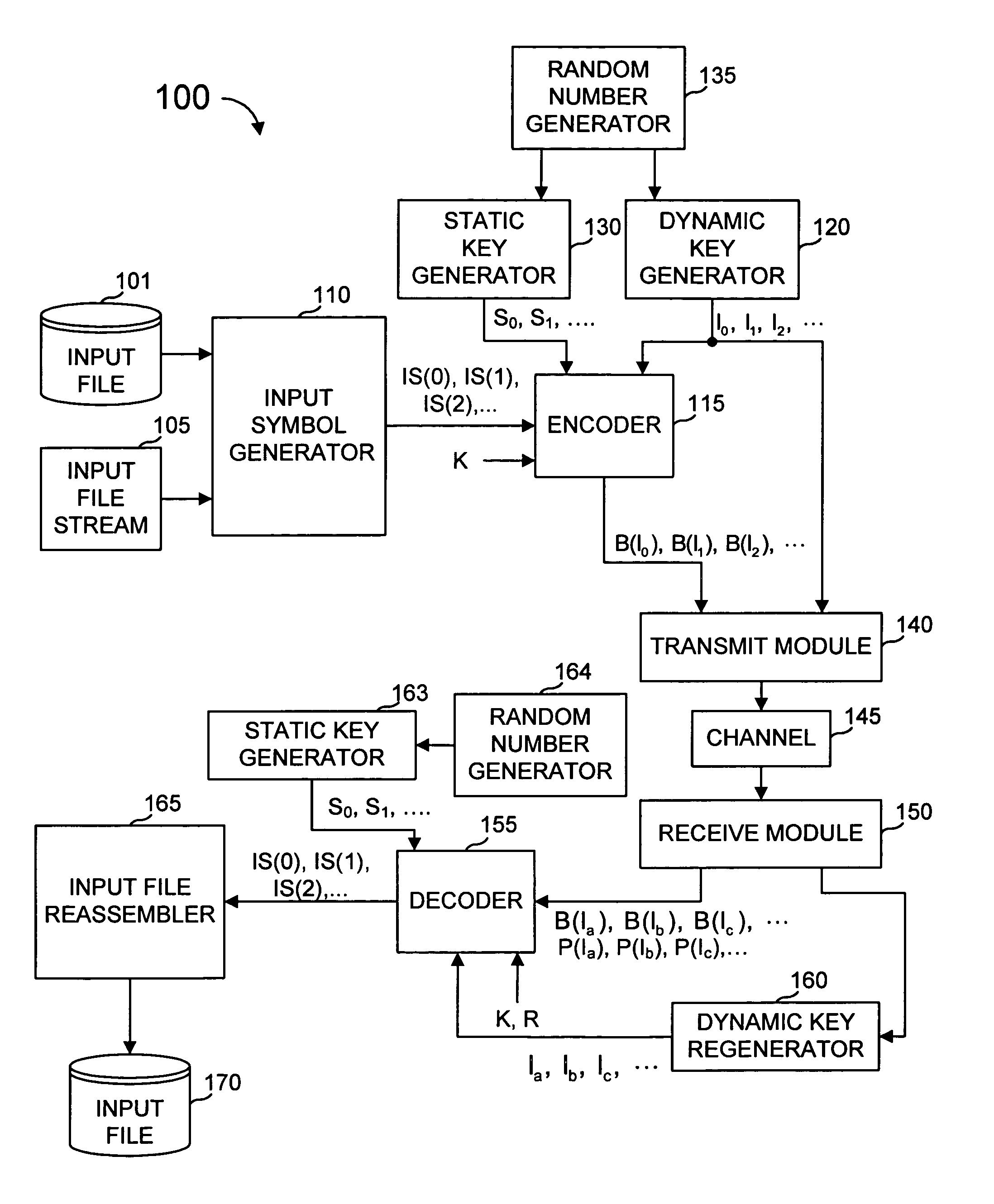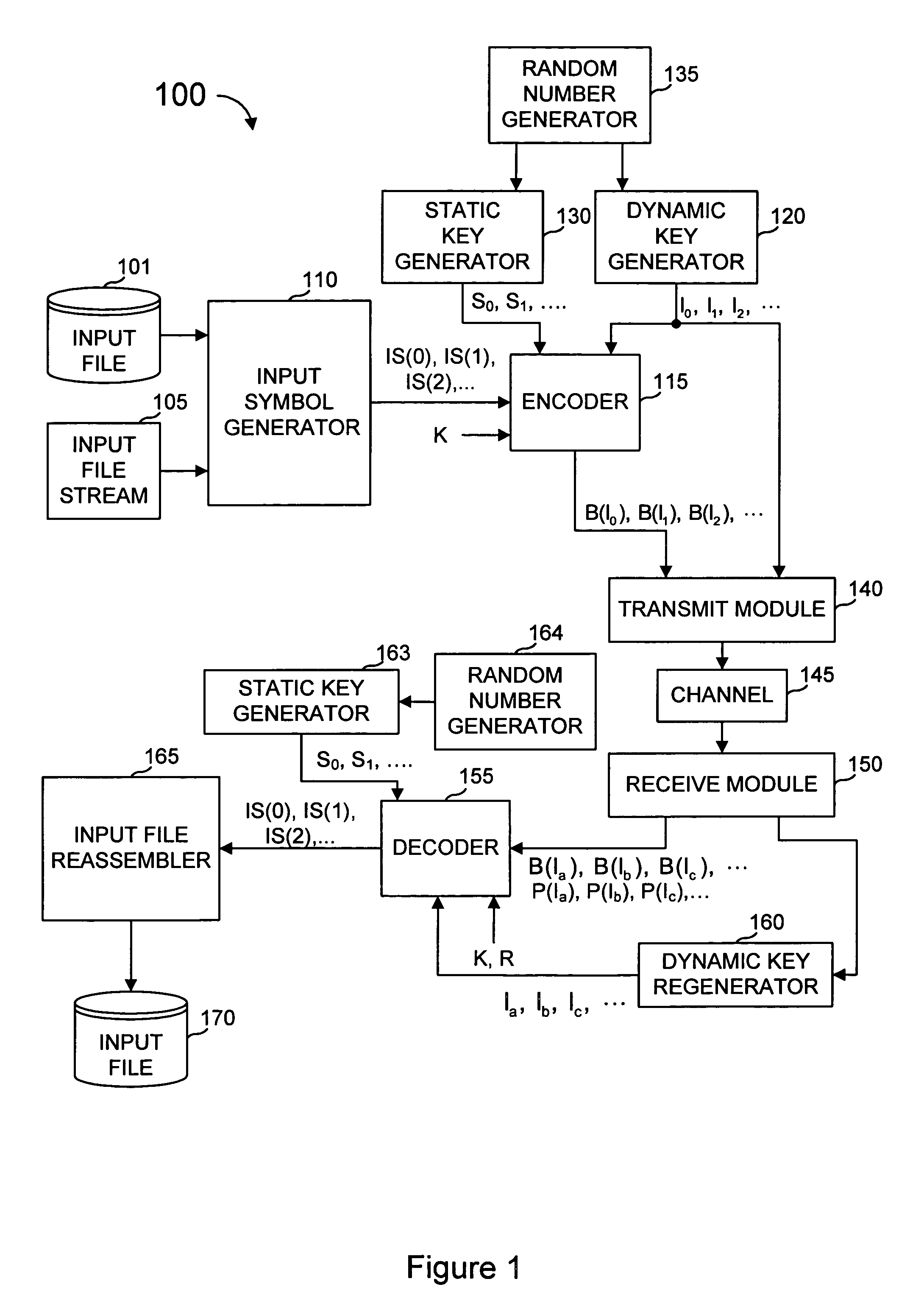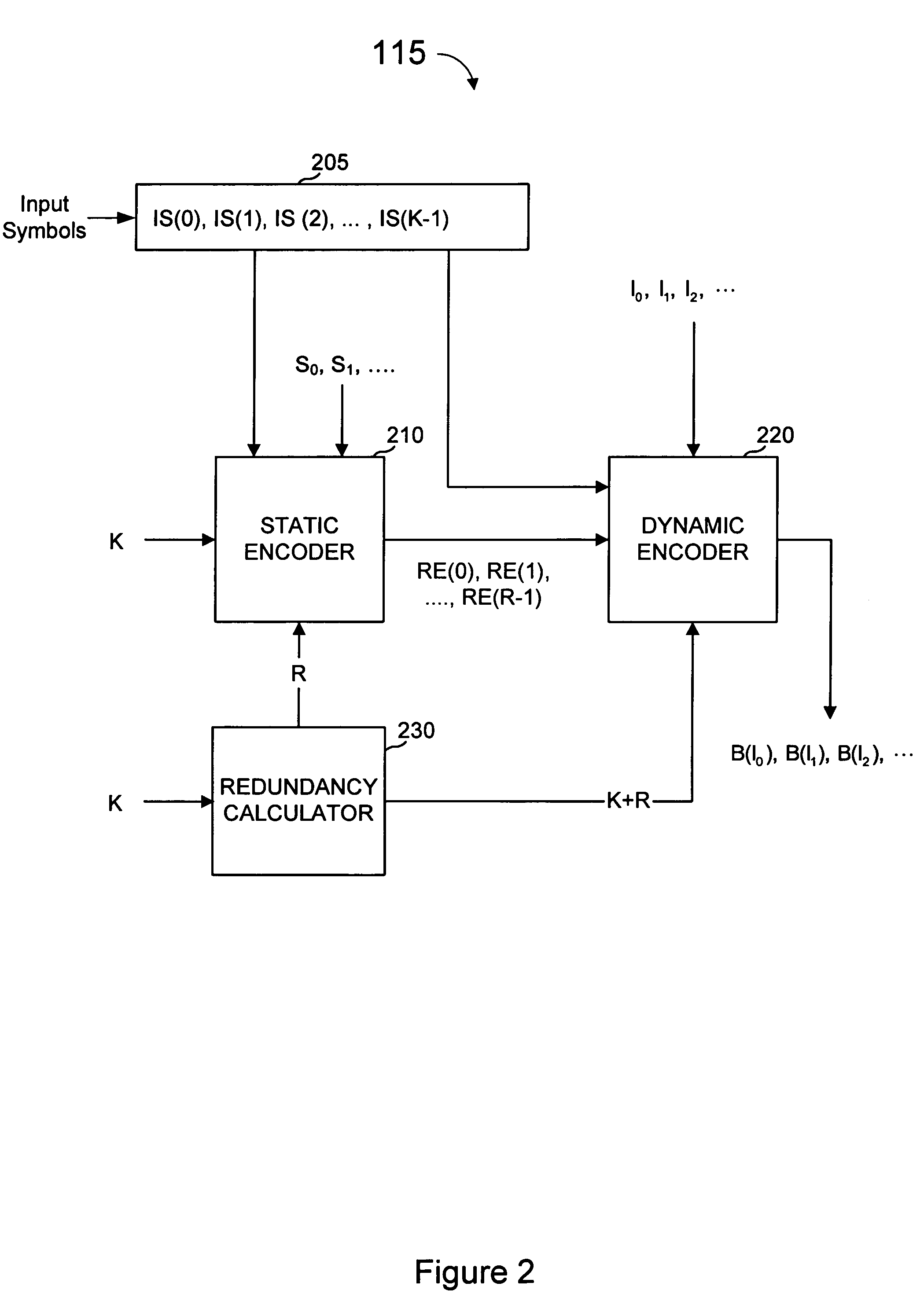Error-correcting multi-stage code generator and decoder for communication systems having single transmitters or multiple transmitters
a multi-stage code generator and communication system technology, applied in coding, instruments, amplitude demodulation, etc., can solve the problems of undesirable inefficiencies of the transmission system, many useless duplicate segments, and many useless duplicate segments received by the receiver, so as to reduce the computational cost of encoding data for transmission over a channel and reduce the computational cost of decoding such data
- Summary
- Abstract
- Description
- Claims
- Application Information
AI Technical Summary
Benefits of technology
Problems solved by technology
Method used
Image
Examples
Embodiment Construction
[0041]In the specific embodiments described herein, a coding scheme denoted as “error-correcting multi-stage coding” (“EC-MS”) is described, preceded by an explanation of the meaning and scope of various terms used in this description. Luby I and Shokrollahi I provide teachings of systems and methods that can be employed in certain embodiments according to the present invention. It is to be understood, however, that these systems and methods are not required of the present invention, and many other variations, modifications, or alternatives can also be used. Some variations of EC-MS and multi-stage coding might be used in products marketed as Digital Fountain Raptor code systems.
[0042]With EC-MS coding, output symbols are generated by the sender from the input file as needed. Each output symbol can be generated without regard to how other output symbols are generated. At any point in time, the sender can stop generating output symbols and there need not be any constraint as to when ...
PUM
 Login to View More
Login to View More Abstract
Description
Claims
Application Information
 Login to View More
Login to View More - R&D
- Intellectual Property
- Life Sciences
- Materials
- Tech Scout
- Unparalleled Data Quality
- Higher Quality Content
- 60% Fewer Hallucinations
Browse by: Latest US Patents, China's latest patents, Technical Efficacy Thesaurus, Application Domain, Technology Topic, Popular Technical Reports.
© 2025 PatSnap. All rights reserved.Legal|Privacy policy|Modern Slavery Act Transparency Statement|Sitemap|About US| Contact US: help@patsnap.com



